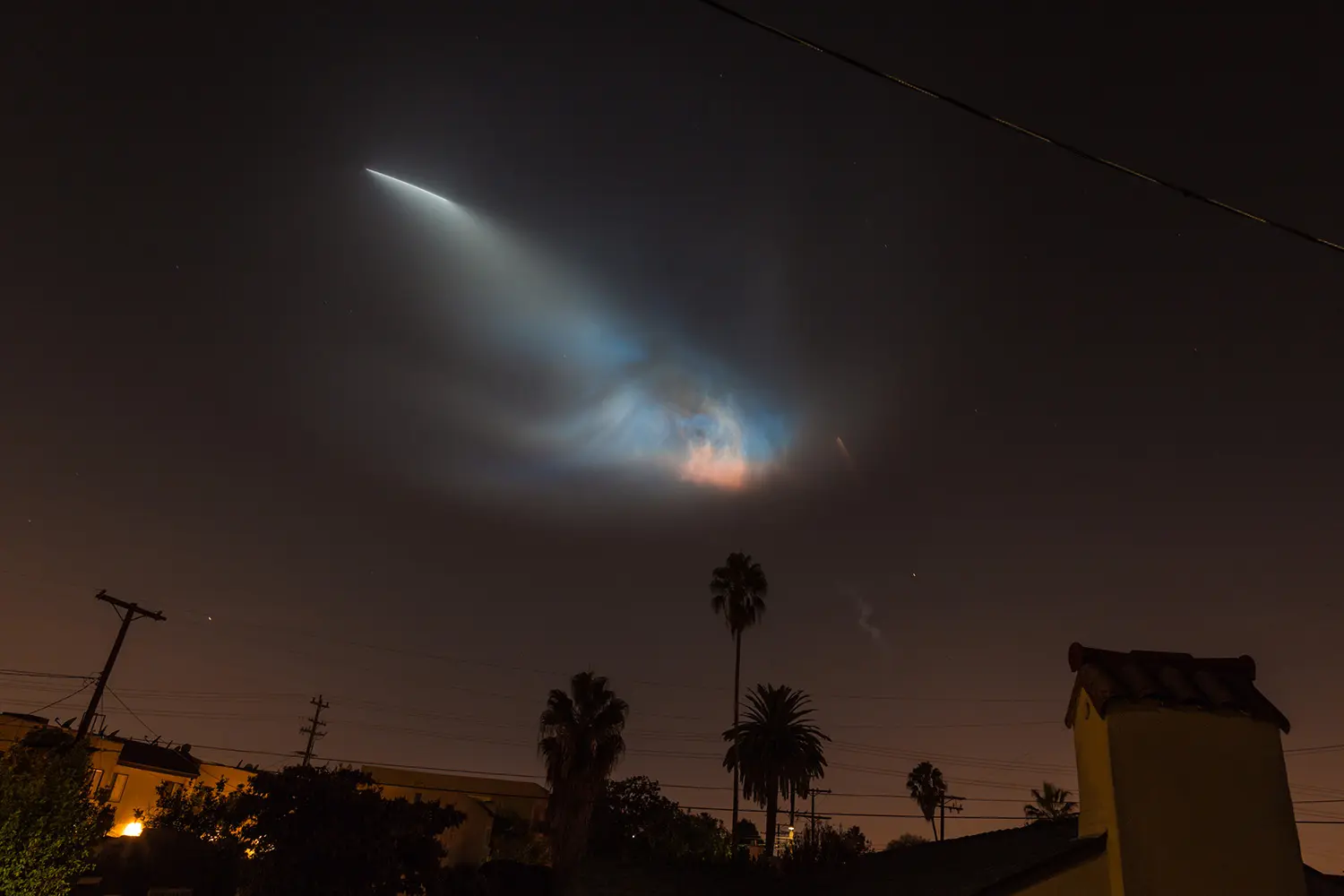
In January 2025 alone, over 120 Starlink satellites crashed back to Earth, burning up in the atmosphere. On average, four to five satellites are disintegrating every single day. While SpaceX and its CEO Elon Musk claim this is just part of routine maintenance—decommissioning old satellites to make way for new ones—the truth is more alarming. This mass re-entry of satellites is releasing harmful metals into our atmosphere, threatening environmental stability and raising questions about the unchecked power of one billionaire with deep government ties.
The Starlink network, designed to provide global internet coverage, is expanding at an unprecedented rate. With thousands of satellites already in orbit and plans for tens of thousands more, the system is becoming a critical piece of infrastructure. However, there’s a catch: when these satellites are no longer functional, they are programmed to burn up in the Earth’s atmosphere, releasing dangerous metallic particles, including aluminum oxides.
A recent study published in Geophysical Research Letters revealed that aluminum oxides from satellite re-entry could significantly deplete the ozone layer. In 2022 alone, satellite burn-ups injected 17 metric tons of these harmful compounds into the mesosphere, increasing atmospheric aluminum levels by nearly 30% above natural levels. At current re-entry rates, this figure is projected to exceed 360 metric tons per year, with unknown long-term consequences for the atmosphere, climate, and human health.
If this continues unchecked, what does it mean for our future? Scientists are still studying the full impact, but given the disastrous effects of past human-caused ozone depletion, this reckless experiment in the sky is deeply concerning. And yet, Starlink proceeds without meaningful oversight, prioritizing rapid deployment over environmental responsibility.
Starlink is marketed as the best way to bring internet access to rural and underserved areas. But does it actually work? While Starlink can provide internet in remote locations, it’s expensive, unreliable, and unsustainable. At $110 per month (plus a $599 setup fee), Starlink is not a practical solution for low-income communities, and its service suffers from latency issues and congestion when too many users sign on.
Meanwhile, fiber-optic internet, municipal broadband, and community-based wireless networks offer better solutions that are more stable, scalable, and affordable. Countries like South Korea and Sweden have prioritized fiber-optic networks, which provide faster, cheaper, and more reliable connectivity without launching thousands of satellites that will eventually fall back to Earth.
Starlink’s model — launch, burn up, replace — is an unsustainable cycle that treats space like a corporate dumping ground. It’s a false solution, one that ignores the damage being done in the name of technological progress. Meanwhile, alternative approaches that emphasize sustainable internet infrastructure, such as high-altitude balloons, community-run mesh networks, and improved ground-based fiber networks, are often sidelined in favor of flashy, high-tech space ventures with deep government connections.
It’s not just atmospheric pollution—Starlink is also contributing to the growing crisis of space debris. With over 5,000 satellites currently in orbit and tens of thousands planned, Starlink is dramatically increasing the risk of collisions in space. A recent study warned that satellite failures and crashes could lead to a dangerous cascade of debris, trapping humanity in an orbit filled with junk.
Scientists and environmental groups are now calling for a pause on new Starlink launches until the environmental risks are fully understood. The Federal Communications Commission (FCC) has faced pressure to regulate the industry more strictly, but so far, SpaceX has largely been allowed to expand without sufficient oversight.
Elon Musk’s companies, including Tesla, SpaceX and Starlink, have benefited massively from U.S. government contracts and subsidies. The Federal Communications Commission (FCC), which is supposed to regulate telecommunications and prevent environmental harm, has been overwhelmingly permissive with Starlink. Meanwhile, the Department of Defense and NASA rely on Musk’s space ventures for critical operations, creating a dangerous conflict of interest.
How can we trust government agencies to regulate a company they also depend on? The U.S. government is both a funder and an enforcer—a contradiction that leaves Starlink operating without meaningful oversight. If Musk can launch and burn up satellites at will, with minimal restrictions, what’s stopping other companies from following suit? This sets a dangerous precedent for commercial space ventures prioritizing profit over planetary health.
The solution isn’t to abandon satellite internet but to demand accountability and sustainability. Good solutions would require stricter environmental regulations, independent oversight, and a shift away from disposable satellite constellations. Some necessary steps include:
If SpaceX is allowed to continue this reckless cycle, what’s next? Will the skies be filled with toxic fallout as thousands of satellites burn up every year? Will we wait for irreversible damage before taking action?
Starlink is a false solution that prioritizes profit and technological dominance over environmental responsibility. We cannot let one billionaire dictate the future of our atmosphere, our climate, and our access to the sky. The government must step in, not as a financial backer of Starlink, but as a regulator enforcing real accountability.
If we truly want to bridge the digital divide while protecting our planet, we need to focus on good solutions, not quick-fix false ones. Instead of relying on disposable satellites that pollute the atmosphere, we should invest in:
Starlink is not the future of internet access—it’s a distraction from better solutions that already exist. We need policies that prioritize sustainability over corporate expansion, ensuring that both our sky and our atmosphere remain clean for future generations.
Let’s stop chasing false solutions and start demanding real ones.
02/07/2025 – Written by the FalseSolutions.org Team